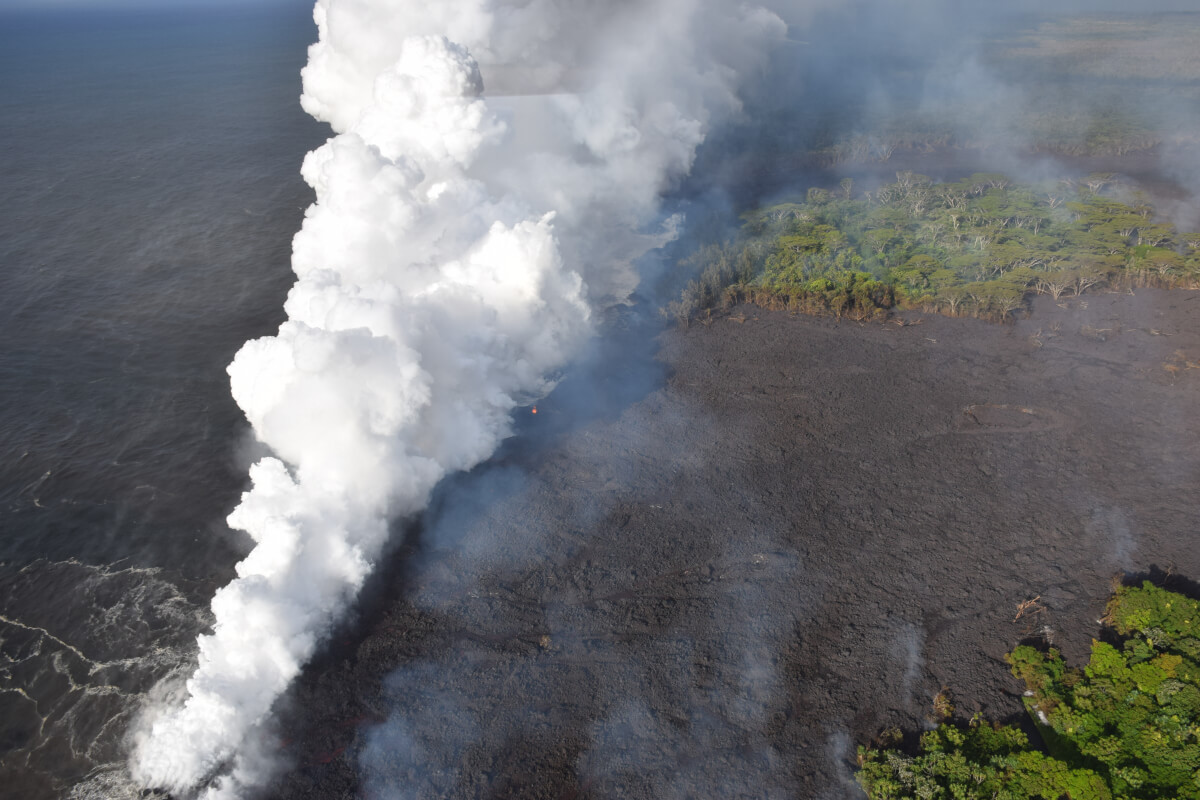New safety warnings were raised after toxic gas on the Big Island’s southern coastline became the latest threat to residents of the island.
After molten rock poured into the sea during the weekend, it set off a chemical reaction and generated plumes of lava haze or “laze”.
The weeks-old eruption has destroyed more than 40 structures on Hawaii’s Big Island and forced more than 2,000 people to evacuate. The formation of laze is the latest threat to affect the island.
According to Janet Babb, a geologist from the Hawaii Volcano Observatory, laze may look harmless, “but it’s not.”
Laze is made of dense white clouds of steam, toxic gas and tiny shards of volcanic glass. It is formed when lava enters the ocean and interacts with seawater, triggering a series of chemical reactions.
Water cools the lava and forms glass that shatters. The miniscule pieces of glass are picked up by the steam cloud, which also contains hydrochloric acid, which can be as corrosive as diluted battery acid. Contact with laze can irritate the skin and eyes and cause breathing problems.
While the gas clouds initially appear on the shoreline, it’s still possible for the winds to pick them up and send them elsewhere. Trade winds on Sunday reportedly carried plumes about 15 miles to the southwest.
The plume flattens out once the wind dies down, although its size depends on the volume of lava falling into the water.

Babb says the protective masks distributed to residents for use against volcanic ash will protect people from the particles present in laze, but NOT from the hydrochloric acid. An American Survival Guide article suggests the use of eye protection along with a good quality respirator as part of protective clothing during a volcano eruption.
Aside from laze, methane explosions are also a concern as lava creeps into areas with a lot of vegetation. Rotting plants create pockets of methane, and the heat from the lava can ignite these methane patches.
Between late Sunday and early Monday, lava encroached then stalled within the grounds of a geothermal power plant. Officials have already removed 50,000 gallons of stored flammable gas from the site earlier this month to reduce the risk of explosions.
The volcano eruption has also crippled Big Island’s tourism industry. It’s estimated that millions of dollars will be lost as bookings drop by almost 50 percent and hotels will sit empty during the summer, which is typically peak tourist season for the island.
While Big Island’s volcano continues to erupt and more problems arise, no major injuries have been reported so far from lava haze, which contributed to two deaths in 2000, according to the U.S. Geologic Survey.


